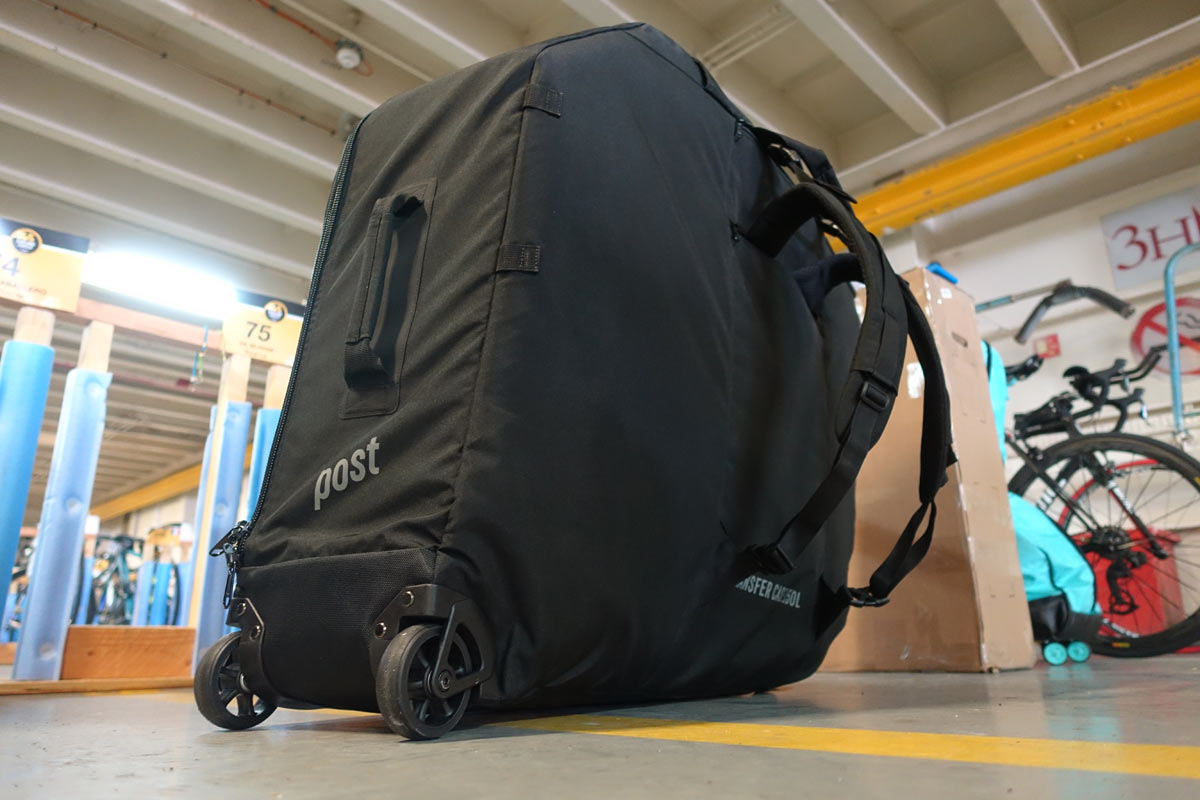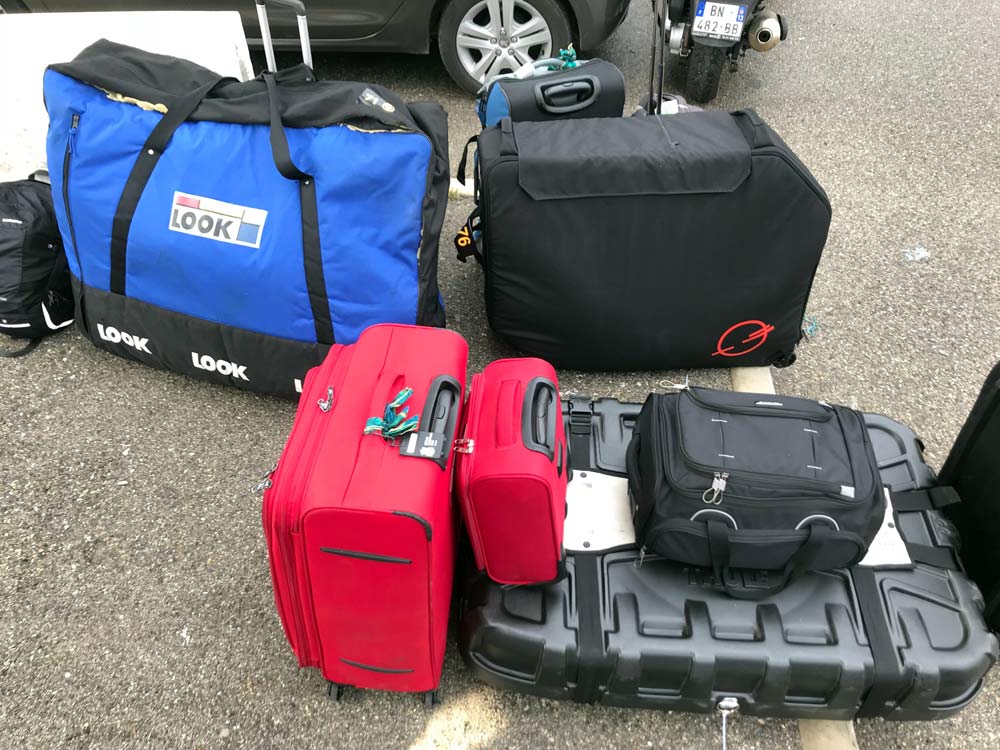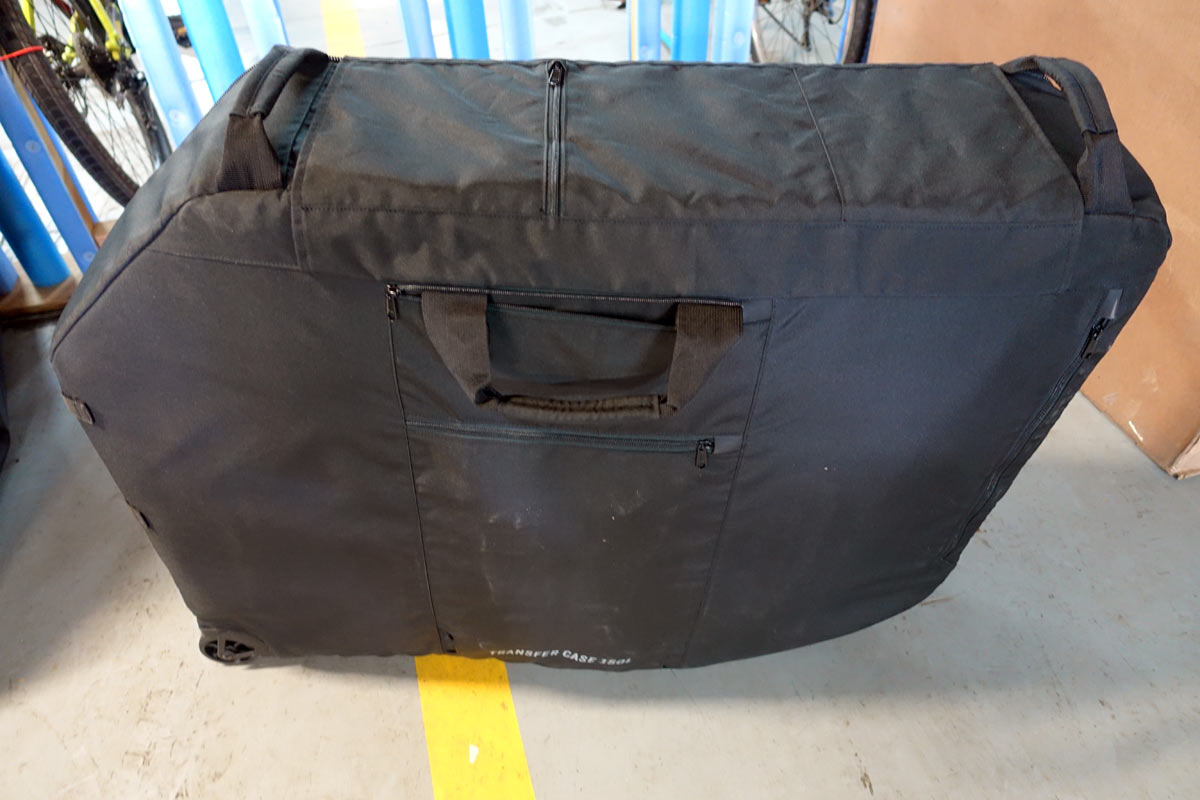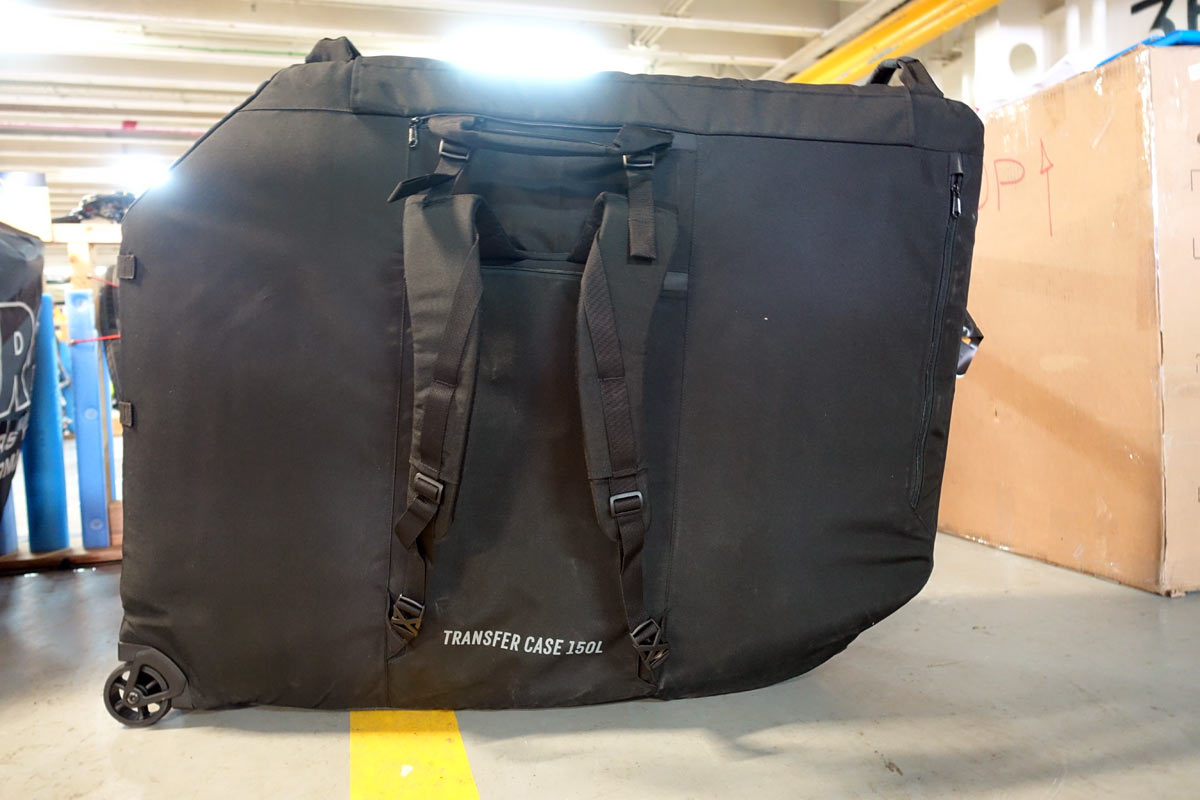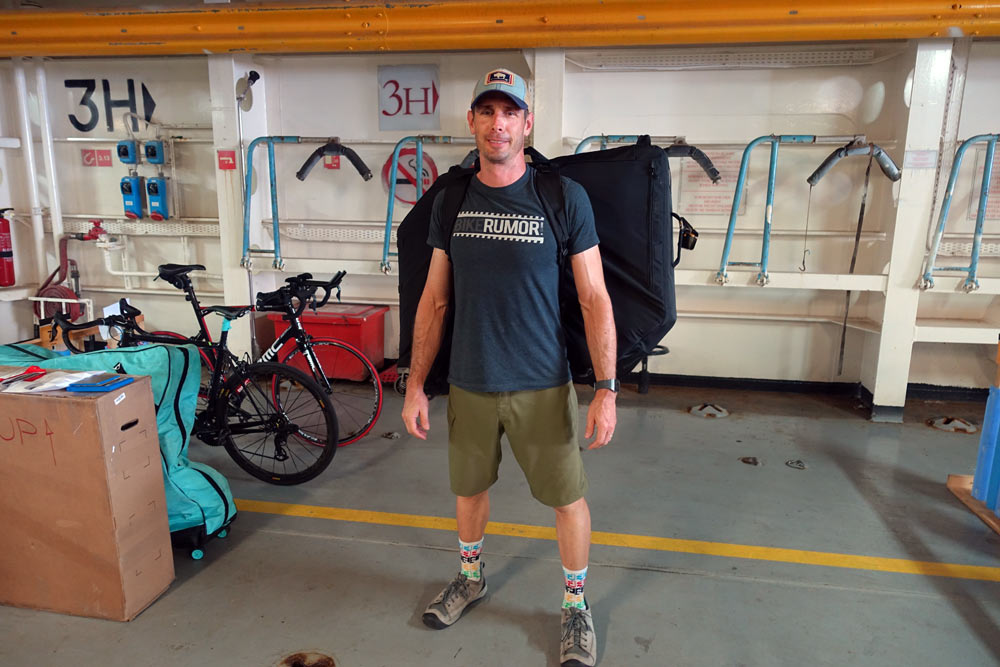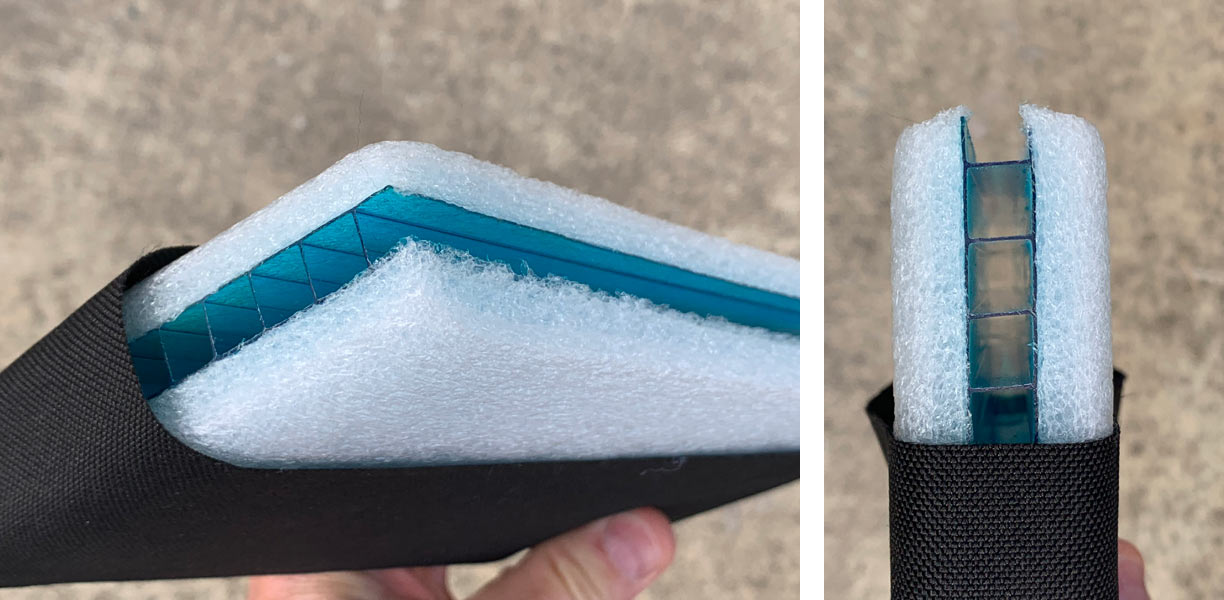Oversize baggage fees are the bane of traveling cyclists’ existence, adding up to $400 for a round trip. So, what if there was a way to bring your bike along for the flight without paying that, and without giving anything up? That’s the answer Post Carry founder Marc Mendoza wanted to find, and it looks like he has with his Transfer Case.
We first saw the Transfer Case as Marc was wheeling a prototype around at Sea Otter 2017. Since that time, he’s gone into full production, and we’ve taken two international trips with it. Before we get into the review, here’s how it works: By sizing the case around a bike’s frame, he was able to diminish the dimensions significantly. Almost laughably, especially when you view it next to standard hard and soft cases. What’s particularly impressive is that, once packed, his case actually feels more secure and firm than many soft-sided cases we’ve tried.
It’s smaller than a bike box, too. The tradeoff is that you have to remove your fork from the frame, which adds a step both on the disassembly side and reassembly side. Which means you’ll have to have a little baggy to put your headset bearings and spacers in. But, really, other than that there’s little else that makes it any harder to use than a typical case.
There are, however, some added niceties…
The Post Carry Transfer Case comes in two sizes -135L and 150L- designed to fit bikes up to 56cm and up to 62cm respectively. I typically ride a 58-59cm road bike, so I tested the larger 150L case. Empty, the cases weigh a claimed 12lb or 12.6lb respectively (5.4 / 5.7 kg). That means, as long as your bike is under 30lbs, you probably won’t run over most airline’s weight limits, which could flag them to charge more than they should. With a decent road bike hiding inside, I had room and weight to pack my helmet, shoes, cycling kit, a couple bottles and a set of allen wrenches.
Inside and out, the Transfer Case has zippered pouches galore. Inside, they’re meant to hold tools, pedals, skewers, small parts and your wheels. Speaking of wheels, each wheel has its own compartment, one on either side of the bike, each with reinforced center sections to prevent the axles or end caps from rubbing through.
The outside pouches hide a carrying handle and these handy backpack straps!
While the rolling wheels work just fine, and the bag is very maneuverable thanks to its small size, being able to wear it does make for quicker transfers in some instances. And it keeps your hands free for your roller bag, a coffee, a burrito, or playing on your phone.
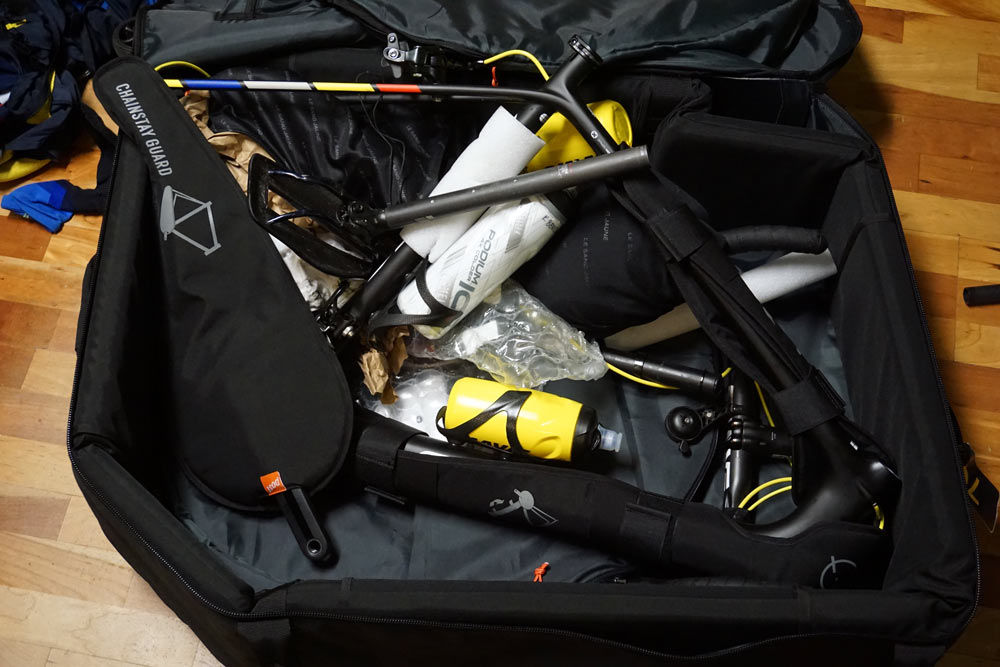
Included with the case are their top/down tube protector and crankset/chain protector. They cover up the parts and keep things from rubbing on them, and have oversized velcro straps you can use to secure other things to them so stuff isn’t just bouncing around in transit.
The Post Carry Transfer Case retails for $399, and the frame/chainstay protectors are available separately for $40 if you just wanted to add those to your existing setup. While I’ve only used it on a couple trips, they’ve both been long, international trips with multiple layovers in each direction. And in both cases, the bike failed to land at home with me on the first try and had to be delivered by the airline the next day, adding even more opportunities for abuse. So far, so good, which means it comes with my recommendation.
The Transfer Case solves a lot of problems for cyclists, and potentially saves us a lot of money, too. What’s not to like?
But, will the bike fly for free?
So far, I’m three for three without paying to bring the bike. On the first trip, I brought a bike to and from France for a Mavic launch, so it was traveling without wheels. On the second trip, I traveled to Italy with the case empty and rolled down (check their website to see how it compacts when not in use), but came home with a complete bike (including wheels and tires), a new kit, and some pasta. Grand total excess baggage fees? $0. Total damage to bikes? None. Should you expect the same results? Sure, why not?
That said, your results may vary. As with any soft case, the potential for damage is there. Post Carry uses an extremely strong, rigid corrugated plastic sandwiched between high density closed cell foam to create the case’s structure. And it is strong…I tried very hard to bend this cutaway sample they sent for photos, and it’s tough! If you use axle inserts (or leave the thru axles installed, remove the rear derailleur and hanger, take off the brake rotors, add a layer of bubble wrap here and there, and generally not pack like an idiot, my hunch is you’ll see generally good results similar to mine.
Post Carry has several videos on their website showing how to pack and use it, measuring guidelines to ensure your bike will fit, and more.
